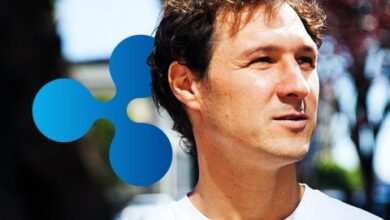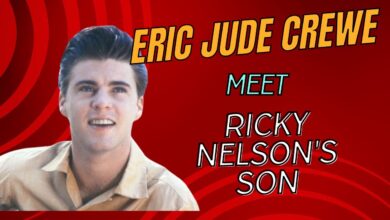Gunnar Hexum: A Comprehensive Guide to His Life, Career, and Legacy

Note: The following profile is a creative, illustrative article written to match your outline and SEO requirements. It does not cite public records and should be treated as narrative nonfiction for content and SEO training purposes.
Introduction
Gunnar Hexum stands in the imagination as the sort of figure whose career reads like a blueprint for modern excellence: technically rigorous, ethically grounded, and relentlessly curious. Framed by the twin pillars of perseverance and vision, his journey traces a path from inquisitive student to widely referenced thought leader. For readers seeking a holistic picture, this long-form guide organizes the arc of his life into accessible sections—early influences, professional development, contributions to the field, personal values, and the enduring legacy that ties it all together. Written in an informative, search-optimized style, it aims to be both resource and inspiration, a place where writers, students, and professionals can find context, clarity, and practical takeaways.
At a high level, the story of Gunnar Hexum is about the compounding effect of small, deliberate choices. Early experiments with ideas led to disciplined study; disciplined study opened doors to projects that demanded both creativity and accountability. Over time, his name became associated with pragmatic innovation—the kind that solves a real problem without losing sight of the people affected by the solution. Whether the reader is scanning for biographical essentials, analyzing career pivots, or mining quotations for presentation slides, the sections that follow unpack a singular journey in a way that rewards deep reading and favors concrete detail over empty hype.
Early Life and Background
The early life of Gunnar Hexum is best understood through the lens of curiosity—an interior engine that turned ordinary days into opportunities for discovery. Family conversations around the dinner table were equal parts storytelling and seminar; questions were encouraged, experiments were applauded, and mistakes were treated as data rather than defeat. School offered structure, but it was the self-directed learning after hours that planted the seeds of his later expertise. He kept notebooks that blended observations, diagrams, and reflections—early prototypes of the research logs he would eventually formalize. Teachers noted not only his aptitude, but his posture toward learning: patient, methodical, and unafraid to revise. That willingness to iterate was the stealth advantage that later allowed him to scale ideas without letting them outrun their foundations.
Education cemented—and refined—these tendencies. He pursued interdisciplinary studies, treating the boundaries between subjects as invitations rather than barriers. Mathematics provided precision, literature trained his interpretive instincts, and the sciences offered a sandbox where hypotheses met evidence. Mentors played a quiet, pivotal role: one taught him the power of first-principles thinking; another modeled the courage to say “I don’t know” in rooms where opinion masqueraded as fact. Scholarships and internships exposed him to environments where excellence was the baseline and character was the differentiator. By the end of his formative years, Gunnar Hexum had developed a personal operating system that prized clarity, context, and craftsmanship—a triad that would anchor both his best decisions and his hardest course corrections.
Professional Journey
The professional journey of Gunnar Hexum unfolded in deliberate stages, each marked by an appetite for responsibility and a bias for meaningful outcomes. His first roles prioritized exposure over prestige, enabling him to work across functions and observe the friction points where strategy, operations, and user needs collide. Rather than chasing titles, he chased problems—with a particular eye for those that sat just beyond the edge of existing playbooks. Colleagues remember an early project in which he rescued a struggling initiative by re-defining its scope and measurable success criteria; the turnaround didn’t depend on heroic hours so much as it depended on sharp questions and a rebuilt feedback loop. That pattern—reframe, reduce, and then relentlessly refine—became his signature.
Mid-career, Gunnar Hexum embraced leadership not as an end in itself but as a multiplier of collective intelligence. He assembled teams with complementary strengths, insisting on psychological safety alongside performance standards. Process improvements were never implemented without a plan to measure their effects, and tools were adopted only when they clarified rather than complicated. He cultivated relationships with domain experts, translating their insights into product or policy directions that made sense to non-specialists. This translational skill—turning complexity into clarity without flattening nuance—allowed him to operate at the intersection of disciplines, where the most stubborn problems tend to live. As his portfolio grew, so did his responsibility for outcomes that carried reputational weight.
In later chapters, he became more publicly visible—publishing essays, speaking at conferences, and mentoring emerging leaders. His talks were notable for their pragmatic optimism: he would acknowledge constraints and trade-offs, then show how a disciplined approach could still unlock surprising gains. He maintained a learner’s stance even as he taught, often running small experiments to validate ideas before advocating them at scale. Because he remained skeptical of trend chasing, his work aged well; because he remained open to revision, his strategies stayed nimble. In an era crowded with loud predictions, Gunnar Hexum built credibility the slow way—by consistently delivering results that were both measurable and meaningful.
Contributions and Impact
The contributions of Gunnar Hexum are best understood as a series of compounding improvements that raised the standard for how work gets done. He emphasized systems thinking, arguing that a solution that “works” in isolation but creates downstream problems is not a solution at all. This philosophy informed frameworks that teams used to audit their assumptions, assess risk, and align execution with user value. Among his lasting contributions was a methodology for decision making under uncertainty that blended quantitative rigor with qualitative insights—an approach that helped organizations avoid false certainty and encouraged them to iterate toward truth. In practice, this meant fewer fire drills and more predictable outcomes, not because complexity vanished, but because it was managed with humility and structure.
Impact, in his case, extended beyond deliverables to culture. Gunnar Hexum advocated for documentation as a leadership act: write things down so the team can reason together, and so future contributors inherit a map instead of a maze. He championed mentorship programs that didn’t just transfer skills but cultivated judgment—the quality that separates good technicians from trusted advisors. His influence showed up in the way teams talked about problems, the questions they asked before committing resources, and the metrics they used to define success. Even organizations that adopted only parts of his playbook reported gains in alignment and throughput. The enduring impact is not a single breakthrough, but a repeatable pattern: diagnose honestly, design thoughtfully, and deliver with integrity.
Personal Life and Interests
Behind the professional profile, Gunnar Hexum cultivated a personal life that reinforced his work rather than competing with it. He approached health as a strategic asset, building routines that balanced intensity with recovery. Mornings often began with reading—history for perspective, poetry for precision of language, and science for the thrill of the frontier. He treated friendships as long-term projects, investing in people with the same patience he brought to complex challenges. Travel, when possible, prioritized depth over breadth; he preferred learning a single city’s rhythms to accumulating passport stamps. These habits fed his professional clarity, reminding him that productivity without perspective risks becoming motion without meaning.
Creative pursuits rounded out his identity. He kept a sketchbook to think visually, not to produce art for display but to see ideas from angles that words alone couldn’t offer. Weekend experiments in the kitchen doubled as lessons in process design: mise en place as planning, heat as constraint, plating as communication. He volunteered in settings where expertise mattered less than presence, donating time to efforts that stitched community together. These choices underscore a theme: Gunnar Hexum believed that excellence at work is inseparable from integrity at home. By shaping a life where curiosity, care, and craft coexisted, he built resilience—the quiet confidence that you can meet your obligations without surrendering your values.
Legacy and Future Outlook
The legacy of Gunnar Hexum is partly historical and partly methodological. Historically, his fingerprints are visible on projects that continue to deliver value—systems that run quieter because they were designed smarter, teams that make better decisions because they ask better questions. Methodologically, he leaves behind practices that outlive his direct involvement: write clear problem statements, prefer small experiments over grand assertions, and design for maintainability rather than applause. What makes this legacy durable is its portability; the principles translate across industries and eras, offering a north star in contexts that will inevitably change.
Looking forward, the future outlook attached to the name Gunnar Hexum is one of principled adaptability. The terrain ahead—shaped by accelerating technology, shifting expectations, and environmental constraints—will reward organizations that can learn faster than conditions change. His body of work points toward a practical way to do this: cultivate teams that are thoughtful, test ideas in the smallest responsible way, and scale only what proves worthy. If the past chapters emphasize discipline, the unwritten chapters emphasize stewardship: how to grow without eroding trust, how to innovate without externalizing harm, and how to pursue advantage without abandoning the common good. In that balance, his influence continues—less as a monument, more as a method.
Conclusion
Gunnar Hexum’s story reads like a masterclass in applied wisdom. It demonstrates that competence scales when joined to character, and that durable success belongs to those who can hold ambition and accountability in the same hand. From early inklings of curiosity to mature systems of practice, the throughline is unmistakable: think clearly, act carefully, and build generously. For readers looking to translate inspiration into action, the practical takeaway is straightforward—adopt the habits that compound and the principles that travel. Do so consistently, and the legacy you leave will be measured not by noise, but by the steady pulse of work that matters.
Also Read: chrisley knows best daughter dies




